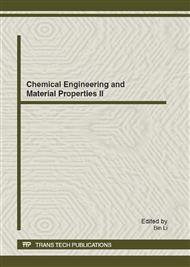p.830
p.834
p.839
p.843
p.848
p.852
p.856
p.861
p.866
Vibration Modal Analysis and Structural Optimal Design of Car Rear-View Mirror Based on ANSYS
Abstract:
In order to improve the safety of the moving car,we have to make simulation and analysis of the dynamic characteristics of the car rear-view mirror. We should consider, in addition to the geometric dimensions, standards and demands, a reasonable choice of the mirror size and installing position, the dynamic characteristics of the car rear-view mirror in the design of the car rear-view mirror. In this paper, we use the finite element software ANSYS to simulate the vibration frequency and vibration modals of the car rear-view mirror under the condition of excitation sources. Based on this and the strength analysis results of the rear-view mirror, we make a optimal design of the rear-view mirror structure. We get five-order vibration modals in working condition and analysis the size of displacement and deformation, and dynamic characteristics. The results show that because of the low modal frequency, the car rear-view mirror is easily inspired by the engine, powertrain system and road to vibrate. Besides, the deformation and the strain distribution of the rear-view mirror are not uniform. So we should control the low rank flexibility modal frequency within a certain threshold frequency when designing its structure. On the condition of little changes of its overall volume, the maximum equivalent stress of the rear-view mirror decreased by 30.5% through optimizing design.
Info:
Periodical:
Pages:
848-851
Citation:
Online since:
July 2012
Authors:
Keywords:
Price:
Сopyright:
© 2012 Trans Tech Publications Ltd. All Rights Reserved
Share:
Citation:


